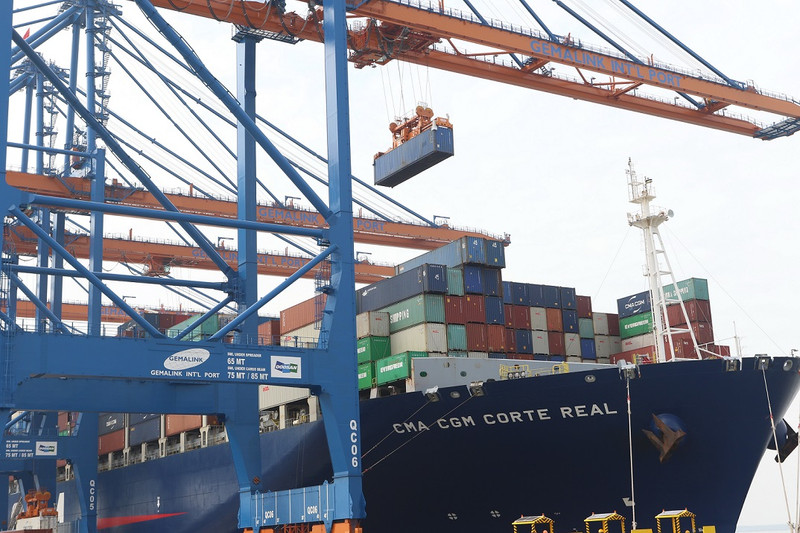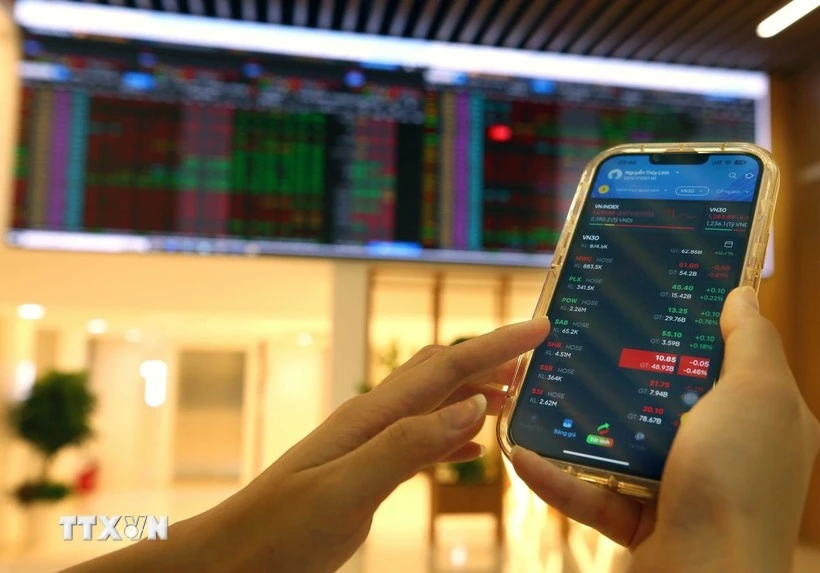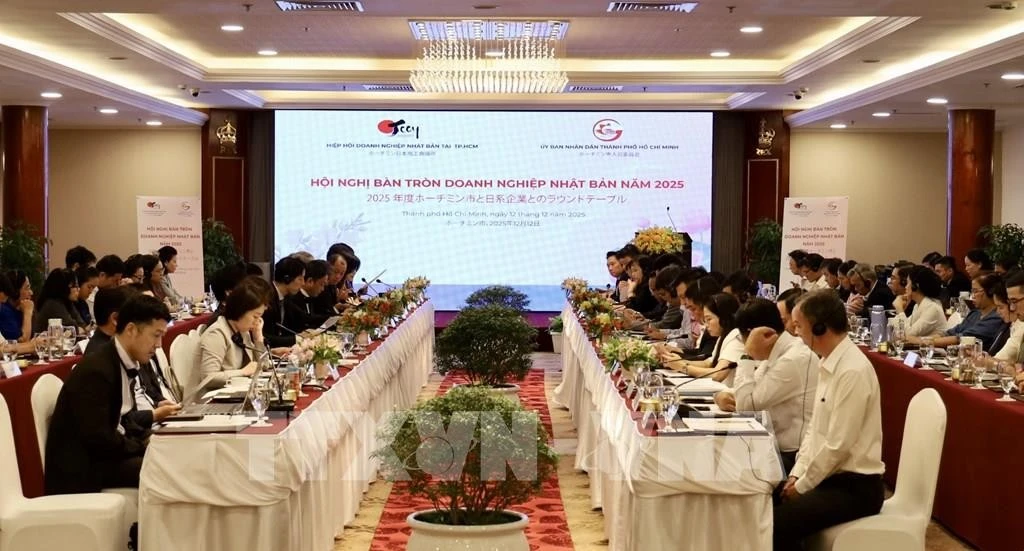The government in its resolution for August cabinet meeting released last week required the Ministry of Industry and Trade (MoIT) to apply more solutions to increase exports, closely control imports, and take advantages of commitments in signed free trade agreements in order to swell export markets.
The MoIT is also ordered to direct Vietnam’s trade offices overseas to seek more information and on the demands of the markets where they are located in an effort to provide timely consultancy for the government and the prime minister on how to expand exports to these markets.
According to fresh figures from the MoIT, in the first eight months of this year, Vietnam’s total export turnover is estimated to hit 227.7 billion USD, down 10% year-on-year. Of which, Vietnamese exporters earned 59.9 billion USD, down 9.2% and accounting for 26.3% of the country’s total export turnover; while foreign-invested exporters fetched 167.8 billion USD, down 10.3% and holding 73.7% of the total.
The MoIT ascribed the grey export situation to global geopolitical tensions causing a shrink in demand for export in many key export markets of Vietnam, especially in the first half of this year.
“If the situation continues, the country’s export target will be badly affected,” said MoIT Deputy Minister Do Thang Hai.
The MoIT earlier set a target of 775 billion USD in total goods export-import revenue this year – up by 6% from 2022. This includes 394 billion USD for exports and 381 billion USD for imports, with a trade surplus of 13 billion USD.
“Many big economies which are Vietnam’s major export partners, such as the US and Europe, have been reducing the spending on ordinary and luxury items. This has caused a drop in Vietnam’s export orders, while the country’s industrial sectors are largely export-oriented, relying on the global market as domestic outputs has far exceeded the domestic demand,” Hai said. “Especially when it comes to many sectors such as garment and textile, footwear, aquatic products, and electronics, only 10% are consumed at home, and the remaining 90% are for export.”
For example, mobile phones and their spare parts, about 90% of which are from the Republic of Korea’s Samsung, are reported to reach an eight-month export turnover of 33.94 billion USD, down 15.4% year-on-year.
Meanwhile, electronics, computers, and their spare parts — which are mainly produced by many foreign firms such as Samsung, LG, Jing Gong, Daewoo Vietnam, Genesistek Vina, and FC Vietnam — have earned a total eight-month export turnover of 36.15 billion, down 18.3% compared to that in the corresponding period last year.
In another case, the Ministry of Agriculture and Rural Development reported that in the first eight months of this year, total agro-forestry-fishery export turnover touched more than 33.2 billion USD, representing a year-on-year reduction of 9.5%. In which, the respective turnover of fishery and forestry products hit 5.68 billion USD and 8.95 billion USD, down 25.4 and 25.1%, respectively. Only agricultural products recorded 16.9 billion USD, up 11.5%.
“High inflation in many nations has forced consumers to tighten their belts. Thus, aquatic exports have reduced remarkably in many key markets including Japan, the Republic of Korea, and EU. Meanwhile, the US and China have begun to resume imports, but activities remain feeble,” said Nguyen Hoai Nam, deputy general secretary of the Vietnam Association of Seafood Exporters and Producers.
In the first eight months, Vietnam’s export-import landscape recorded a trade surplus of nearly 20.2 billion USD – including imports of 207.52 billion USD. However, this is not quite a positive mark in the economic picture because both exports and imports suffered from a reduction, at 10% and 16.2% respectively.
Normally, a trade surplus is quite positive when it purely comes from a rise in exports and a reduction in imports.
Moreover, while foreign-invested exporters recorded a trade surplus of 34.23 billion USD, Vietnamese exporters suffered from a trade deficit of 14.03 billion USD – meaning they are still facing more difficulties than foreign firms, and the economy still relies remarkably on the performance of foreign companies.
Notably, the economy’s import reduction means domestic production remains in big difficulties as the Vietnamese economy is an export-oriented one, with about 80% of materials having to be imported due to weak supporting industries and scarcity of materials which fail to be produced at home.
Vietnam’s eight-month index of industrial production (IIP) is estimated to have seen a 0.4% reduction compared to the same period last year, when the IIP grew 9.2% year-on-year. The IIP of the processing and manufacturing sector is estimated to have decreased 0.6% compared to the corresponding period last year, when the rate had ascended 10.1% year-on-year.
“The slowdown in external demand especially have affected manufacturing firms and workers in export hubs, such as those centred around Hanoi and Ho Chi Minh City,” said the World Bank.
According to an April 2023 survey by the Private Sector Development Committee conducted over 10,000 enterprises in Vietnam, 71.2% of surveyed enterprises reported a cut of at least 5% in labour, while 60.1% revealed a reduction in revenue of at least 20% during the first four months of 2023. Of the enterprises surveyed, 59.2% reported reductions in orders. Looking ahead, more than 80% of enterprises anticipate a worsening of economic and business conditions during the remaining months of 2023.
However, according to the MoIT, in reality, Vietnam’s export turnover has been bouncing back since May, at 27.86 billion USD in May, 29.4 billion USD in June, 30 billion USD in July, and an estimated figure of 324 billion USD in August. However, these figures remain lower than those recorded in the corresponding periods last year.
The World Bank forecasted that Vietnam’s economy is expected to grow by 4.7% in 2023, with a slow projected recovery to 5.5% in 2024 and 6% in 2025.
“The growth projection assumes a moderate recovery in goods exports during the second half of 2023, especially the fourth quarter, based on a gradual recovery of demand from the European Union and United States,” the World Bank stated.
“Looking ahead to 2024, economic growth is projected to be driven by a moderate recovery in exports and imports, in line with the expected rebound in global growth, as well as improvements in private investment.”
| Export value of key items, Jan-Aug 2023 | ||
| Items with export turnover of over 10 billion USD | Estimated (millions of USD) | UP/down year-on-year (%) |
| Electronics, computers, and spare parts | 36,150 | -1.5 |
| Mobile phones and spare parts | 33,937 | -15.4 |
| Machinery, equipment, and devices | 26,960 | -10.3 |
| Garments and textiles | 22,348 | -15.0 |
| Footwear | 13,487 | -17.6 |
| Key export-import markets, Jan-Aug 2023 | ||||
| Market | Exports (billions of USD) | Up/down (% year-on-year) | Imports (billions of USD) | Down (% year-on-year) |
| China | 35.8 | 0.1 | 68.1 | -17.0 |
| US | 62.3 | -19.1 | 9.3 | -6.6 |
| ASEAN | 21.8 | -8 | 27.0 | -15.9 |
| Republic of Korea | 15.5 | -7.3 | 32.8 | -24.6 |
| EU | 29.4 | -8.3 | 9.8 | -5.4 |
| Japan | 15.2 | -3.9 | 13.7 | -14.1 |
| Source: Ministry of Industry and Trade | ||||
















